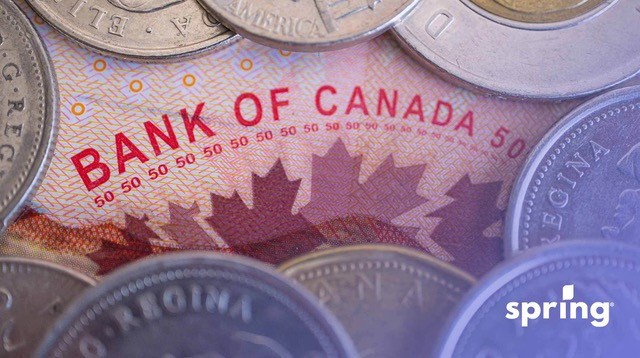How the process of foreclosure works is a little different depending on the province you live in and who your mortgage lender is. It can be a fast process or last an extended period of time. That said, there are some general guidelines that Canada must follow. Let’s take a look.
How Foreclosures Work
In Canada, foreclosures happen when you miss too many mortgage payments on a rental property or your primary residence and are unable to pay your balance up to date. Essentially, if you’re having financial difficulties and you miss around 3 months of mortgage payments, then lenders will send you a notice saying you’re in default and could be facing foreclosure.
If you’re unable to pay your remaining balance of outstanding debt, then most lenders will likely start the foreclosure process. However, if you have CMHC insurance, it may be the CMHC facilitating the process instead of the lender.
For lenders in Canada, a foreclosure is a last resort. This is because it’s a lengthy and expensive process for lenders. Ideally, they want to come up with the best option for avoiding mortgage foreclosure. However, if they do go through the foreclosure process, you have 20 days to respond to the court claim after the lender starts the process. Responding to the claim could give you more time to come up with the funds or make arrangements.
Starting the Foreclosure Process
The foreclosure begins once the court issues a redemption order. However, at this stage, you can still pay your mortgage up to date if your financial situation allows for it. There’s often a timeline attached to this as well, and if you manage to pay your mortgage up to date, then you can effectively stop the foreclosure and avoid any legal proceedings.
That said, if there’s no way you can pay off the funds or no way to prove that you can come up with the money, then the court has the legal right to decide to issue an order of foreclosure right away and transfer ownership of the home to your lender. However, this isn’t always what they choose to do. Sometimes, the court will decide to issue an order of sale instead.
This order of sale is under the control of the court, and you have 30 days to leave your home. From there, either the lender takes ownership or the new buyer, and the legal process is completed.
Foreclosure Rules in Different Provinces
In Canada, certain provinces and territories are more prone to foreclosure action. Each has its own rules regarding foreclosures that differ slightly from the standard rules. These places are British Columbia, Alberta, Saskatchewan, Quebec, and Nova Scotia.
British Columbia
Foreclosures in BC follow a pretty standard process. That said, when the default notice is issued, it is based on the financial institution that you hold your mortgage with. For most, it’s once you’re 3 months behind on your mortgage financial obligations, but it could be a lot sooner. However, even if it takes them 3 months to issue a default, they’ll likely contact you way sooner than that to arrange payments.
Once the mortgage default has been issued, it will then be sent to the Supreme Court. The court then provides the owner with a date for when the payments have to be made. If the payments aren’t made on time, then a notice of foreclosure will be issued. From there, the lender can sell the home to recoup their cost.
Alberta
In Alberta, the lender can legally start the foreclosure proceedings as soon as your first mortgage payment has been missed. However, since the foreclosure process can be lengthy and expensive, this isn’t common. The lender will usually just contact you to arrange payment. If an agreement is unable to be reached, though, then the lender may choose to go forward with a foreclosure or a quit claim. This is especially the case if you have multiple missing payments.
Often, lenders will choose to go with a quit claim instead. With this, the foreclosure process is avoided, and the ownership title is transferred from the borrower to the lender. However, if they choose to go with a foreclosure, then a statement of claim is issued, and the borrower has 20 days to file a Statement of Defence or Demand of Notice.
From there, the lender has to issue an Addidavit of Value and an Addidavit of Default. Then, the borrower has a certain amount of time to come up with the money before the lender can start the sale. This is called a redemption order. Suppose it cannot be met. Then, the house will be sold. Once the sale is complete and the debts are paid, then the borrower can keep the remaining equity. If the property is unable to be sold, then the lender will take ownership of the foreclosed property.
Saskatchewan
In Saskatchewan, the time frame for foreclosure is shorter than in any other province in Canada. Once the foreclosure process starts, it doesn’t take long. The best way to prevent it is by communicating with your bank and letting them know as soon as you know you can’t make a payment. However, this is how it works once the foreclosure process has started.
Once the lender decides to go through with the foreclosure process, they file the notice with the Provincial Mediation Board. From here, there’s a 30 day notice period where the mediation will contact the borrower and give them notice. Then the lender can apply for permission to initiate forecoluse, however, the borrower has a 15 day between this date and the court hearing.
After this, a Statement of Claim is issued, and the borrower has 20 days, after which they’ll receive a Notice of Motion for Foreclosure Relief. From there, what happens is based on equity in the home. The home can then be put in the lender’s name; the lender will request the title, or a redemption period will be given; this gives the borrower a certain amount of time to pay the balance of the mortgage, which they can do by selling the property.
Ontario
In Ontario, you have a little more time when it comes to the foreclosure process. In order to start the foreclosure process, the lender has to demonstrate that the borrower has breached one or more of the mortgage terms in the mortgage contract. Even then, the lender has to wait a mandatory 15 days before taking any legal action. Once they’ve waited that amount of time, then the lender can issue a Notice of Sale.
Before any more legal action is taken after the Notice of Sale is issued, the borrower has 35 days to address the default and correct the issue. However, if the borrower doesn’t manage to correct the issue within 35 days, then the lender is able to file a Statement of Claim with the Ontario Supreme Court.
After the lender issues the Statement of Claim in Ontario, the borrower then has 20 days to take action. This is where the borrower has options. They can issue a Statement of Defence and dispute the claims the lender has made. You can also claim a Demand for Notice, which agrees with the lender’s claims. However, in Ontario, there is an alternative to the foreclosure process known as Power of Sale.
Quebec
In Quebec, there are two different types of foreclosure when the homeowner fails to keep their mortgage in good standing: Judicial Foreclosure and Non-Judicial Foreclosure. Here’s how the process works for each.
Judicial Foreclosure
With a judicial foreclosure, the lender files a suit with the courts after you’ve fallen behind on your mortgage payments. Once it’s been filed, you’ll receive a letter requesting the payment of your mortgage. You essentially have 30 days to bring your payments up to date before the lender is able to request the sale of the property. You won’t be evicted from the property until it’s been sold.
Non-Judicial Foreclosure
With non-judicial foreclosure, the lender can demand payment without having to go to court. The borrower is then given a certain period of time to make up the payments before they’re actually able to sell the property.
If the payments aren’t made by the time the waiting period ends, then the ownership of the property is given to a trustee. From there, the trustee can manage the sale of the property in order to pay back the lender. This is normally done with an auction.
Nova Scotia
Just like with the other provinces, lenders in Nova Scotia can issue a foreclosure on your property if you’re unable to make the monthly payments. That said, it’s a little simpler than with the rest of the provinces.
In order to start the process, the lender has to apply with the Supreme Court of Nova Scotia for approval. Once the court grants approval and a court order is issued, you then have 30 days to make the payment before the foreclosure process continues. The property will then be sold at auction, and you will be evicted once the sale goes through. However, Nova Scotia also has the option of the Power of Sale.
Power of Sale
In some provinces, instead of going through with the foreclosure process, lenders may choose to go with a Power of Sale instead. This is a simpler and cheaper process since the lender doesn’t have to transfer ownership of the home. That said, they can still facilitate the sale with the borrowers on the title and avoid having to involve a real estate lawyer.
All homes sold under Power of Sale are sold at or below market value, depending on the condition of the home. With a Power of Sale, the borrower still gets the proceeds of the sale as well. However, they’re still liable for all costs associated with the Power of Sale, so the profits would be less than if you sold the property yourself. The proceeds from the sale are used to pay your mortgage balance as well as any mortgage arrears, as well as any other costs associated with your mortgage debt and the sale.
How to Stop A Foreclosure
In Canada, foreclosure is a lost resort because it’s expensive for both the lender and the borrower. Before it gets to this point, there are plenty of different options available to you. The first is speaking to your lender or get professional advice.
As soon as you know you won’t be able to make your mortgage payments, you should speak to your mortgage lender. They’ll be able to tell you if you’re eligible for mortgage insurance or to defer your payments. You can also make alternative payment arrangements, which can be spread throughout your amortization period. However, there are more temporary solutions, and you might need a more permanent one.
Another option for those who are unable to make their debt payments is a consumer proposal. With these, licensed insolvency trustees help you to manage your debt and take back control of your finances. While they can’t get rid of your mortgage payments, they can help you manage your other debts and loan payments to avoid any missed payments. If this doesn’t work, then declaring bankruptcy could be a better option, but you’d have to go through the bankruptcy laws to determine the best way to declare bankruptcy with a mortgage.
Another option, as well, is to sell your home before you default on your mortgage. Not only will you get your money, but you can avoid the involvement of the courts and keep your credit report intact which can help you manage your finances long term and reduce the impact on your credit scores.
Does the Borrower Receive Proceeds From A Foreclosure Sale?
Whether or not the borrower will receive proceeds from the sale process is based on how much is received for the sale. If enough is received to cover the remaining cost of the mortgage and all other expenses, anything left is usually given to the borrower since they have some equity they’ve accrued.
That said, in some cases, there isn’t enough received from the sale to cover all of the costs, and the lender will seek repayment from the borrower for those costs. The best way to resolve it before you even miss your first payment is to speak to your lender because foreclosure affects them as well as you.
Final Thoughts
In Canada, the mortgage foreclosure process is long and complicated. It can also be very costly. Before you find yourself in that situation, you should contact your lender. Not only can you make payment arrangements for your missed mortgage payments, but you may also be able to refinance to more affordable payments with lower interest rates.
Banks also offer different options that you may have purchased, such as mortgage insurance. In some cases, you may qualify, and these insurance companies can make your payments until you’re able to afford them again. No matter what you choose to do, though, there are plenty of ways to avoid the foreclosure process or stop foreclosure while it’s underway.









